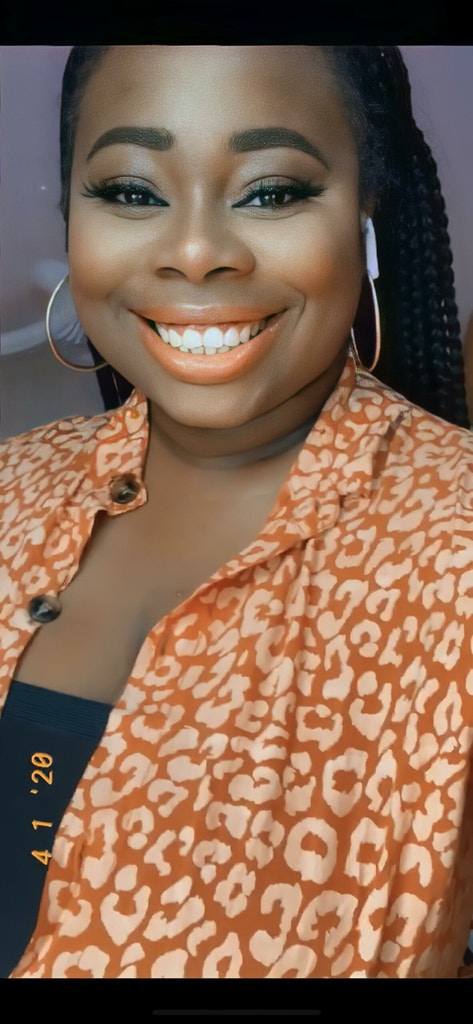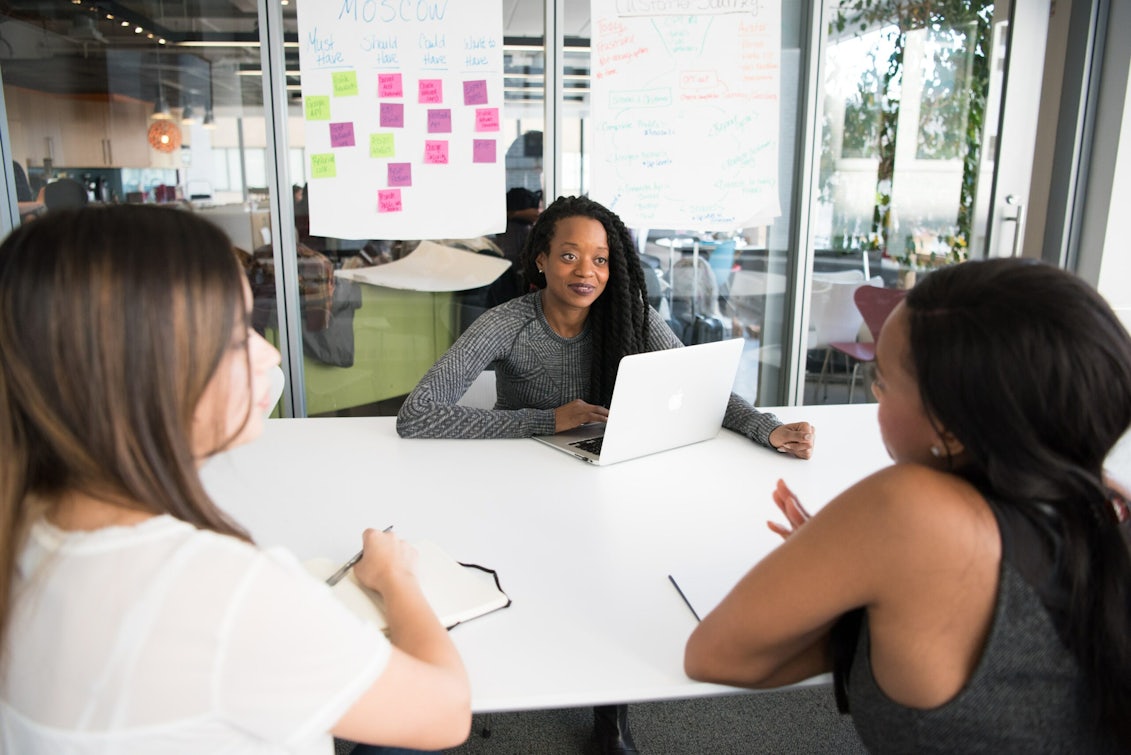This blog post was written by Rejoice Ojiaku for Impression. Rejoice is the SEO Manager at Incubeta NMPi and Co-Founder of B-Digital UK.

Rejoice has worked within digital marketing (SEO) for 2+ years, after finishing her master’s degree in marketing at The University of Manchester, she started her journey as a Junior SEO Executive. She is passionate about Diversity and Inclusion within the workplace and ensuring the perspective and struggles of Black people especially Black women in the workplace is changed and heard. She has experience in content creating and designing and Outreach SEO whilst continuing to lend her voice around topics such as racism, sexism etc. Her career goals are to eventually work as a Freelance Content SEO Consultant or become Head of SEO as well as doing her very own Ted Talk one day whilst growing B-DigitalUK into a powerhouse for Black Talent in Marketing.
If you have any questions about this blog or would like to connect with Rejoice, you can find her on LinkedIn and also Twitter. Find out more about diversifying your talent pool with BDigital.
We speak of diversity and inclusion in the workplace but we are often limited to conversations around trying to teach others about racial injustice and discrimination etc, but this is 2021. Enough of that! The conversation has to move forward in the direction of “what does tangible change actually look like?” It is understandable that not everyone will be clued up regarding cultural sensitivity and what marginalised people go through in society, so let’s break it down and educate those who need it.
Issues / Hold On – Teyana Taylor
The main issue surrounding conversations about diversity and inclusion is that those who are not marginalised feel that having this conversation is a personal attack to them. Companies feel as if when they are called out about their lack of diversity & inclusion there is a vendetta when really, it’s pointing out where more work needs to be done. What is missing is real acknowledgement that these companies are simply not doing enough to tackle these things and we are seeing half-hearted attempts at diversity and inclusion.
June 2nd, 2020 was Black Out Tuesday, if you are unaware of what that is, it was a collective act to protest racism and police brutality. The movement was originally organised within the music industry in response to the killings of George Floyd, Ahmaud Arbery, and Breonna Taylor. This initiative started under the hashtag #TheShowMustBePaused, which was the brainchild of two Black women who work in music marketing, Jamila Thomas and Brianna Agyemang. Companies participated by posting black squares on their Instagram to show solidarity but for some reason…it stopped there.
The BLM movement and Black Out Tuesday sparked a great conversation in organisations around diversity and inclusion which led to many people questioning why is it so hard to have representation for marginalised groups? This has led me to ask the Marketing/Advertising industry that very same question. Why is it so hard? Is it actually hard or do people just not care? As Teyana Taylor put it in her son “You Gon’ take responsibilities” so buckle up cause it’s going to get bumpy.
Still Disappointed – Stormzy
The Marketing/Advertising industry is a beautiful place in terms of the endless amount of talent and creativity – but as a Black woman in SEO, I wonder why it’s such a struggle to see people who look like me in leadership. I realise it does not have to be this way and there can be tangible change to do right.
I am still disappointed when I see awesome summits/conferences being held and ALL the speakers are White, or ALL the speakers are Men…is it really that hard? No, it isn’t! The preferred look or gender has always been white or male and I understand it might not be done intentionally which is where “unconscious bias” comes in.
We all know that unconscious bias is the underlying attitudes and stereotypes that people unconsciously attribute to others and although we go through training to spot these, they can manifest in other ways. One way would be to look at why there is so much comfortability in having an all-white leadership in an organisation or an all-white speaker’s panel at a conference.
Navigating the world as a Black person comes with a lot of headache and trauma and I face trauma outside of work when it comes to racism and sexism but to be a Black woman in the workplace can be uncomfortable especially when I am questioning myself on things like “should I wear braids?”, “okay Rejoice, don’t be too loud so they won’t label you aggressive”. It shouldn’t be this way for other Black people, and this is why it’s imperative for companies to know about cultural sensitivity as the lack of knowledge can trigger negative responses from Black people or other ethnic minorities.
Ultimately, I am disappointed that as Black people we are still in the same place of limiting ourselves to appease those with higher privilege than us, especially for organisations that are so loud about Diversity & Inclusion but can never back their chat but before I start going into all the frustrations we face as a race, Stormzy reminds us by saying “Let me just ‘llow it, Lemme just pause”
A Change Is Gonna Come – Sam Cooke
“Charity begins at home” is the perfect saying, for companies to speak about Diversity and Inclusion, I would need to see D&I in the organisation structure – including leadership. Your company cannot operate on the basis of “we don’t see colour” (which is such a run-down statement) because if you do not see colour, then how can you be diverse? You must be able to see colour and understand the impact skin colour has on the everyday lives of some of your employees especially your Black and Brown employees. Your Black/Brown employees are not able to be colour-blind because they are reminded about their skin colour on a daily basis so within the organisation, when we speak of well-being, do we cater these services to particular trauma during times of distress. For example, I wonder during the BLM movement, what companies were doing from a well-being standpoint for their Black employees who were subjected to trauma. This is where cultural sensitivity comes into play, it will enable companies to have a better reaction towards their employees during times that cause tremendous distress.
Another tangible way of effective change is to look into initiatives ran by marginalised groups that are trying to get more representation in organisations. Initiatives such as B-DigitalUK, Women in Tech SEO, Black Young Professionals etc are great places to tap into and utilise to have a more diverse talent pool from all levels. It will also allow organisations to tackle unconscious bias by actually understanding the experiences of those marginalised.
I do believe in what Sam Cooke says about a change coming but that change won’t come if we are still having dishonest conversations about Diversity & Inclusion and companies continue doing tokenism in order to appease the public. Listen to the voices of the marginalised groups, how they feel, what change THEY would like to see and not what change a company is comfortable in showing. If you won’t listen, then exit the conversation entirely because when that change comes, its either you are with us or left to the side. Your choice!
Energy – Drake
In all this, we recognise allies and understand why allyship is important, however, we cannot have allies that centre themselves in the discussion as it is not helpful and it’s very disingenuous to the cause. Allyship means YOU recognise the privilege YOU hold and use that to better help those who are less privileged. The type of energy that is needed in the talks of Diversity & Inclusion is to be on organisations’ necks, and what this means is to always challenge policies and mindsets. Gone are the days where we coddle feelings as it serves no real benefit to do so – what we must do is continue challenging, even when it makes others uncomfortable as real change does not arise in comfort.
Drake was not playing when he said “Got a lot of people tryna drain me of this energy” because with the constant back and forth conversations I see happening with diversity & inclusion and how marginalised groups should be grateful that things are not the same as they were…its very draining. In saying that, we must keep the same energy so we can attain what we need to attain, and companies should also have the same unapologetic energy. For long term, tangible change to happen, this cannot be a one and done thing but a continuous process that involves reviewing old processes and questioning what we are comfortable with.
That’s all folks!
If you are interested in learning more about unconscious bias and cultural sensitivity, I’ve handpicked these extremely useful resources:
Resources
Cultural Sensitivity
- Audeliss: How can you improve cultural sensitivity in your organisation?
- InfoQ: Developing cultural sensitivity in working with other cultures
- LinkedIn: What about cultural sensitivity
- Chron: What Practices Could You Implement to Increase Cultural Sensitivity & Acceptance in the Workplace
- Journey To leadership: Dealing with cultural sensitivity in the workplace
Unconscious Bias
- RightTrack: 6 examples of Unconscious Bias at work that you may not notice
- BuiltIn: Unconscious Bias Examples
- University of California: Unconscious Bias
- AdvanceHE: Unconscious bias
- MindTools: Avoiding unconscious bias
Initiatives to Support
- B-DigitalUK
- Women In Tech SEO
- Black Young Professionals (BYP)
- Increasing Black Representation
- MEFA
- The Black United Representation
- Rare Recruitment
Check out the rest of Impression’s Representation in Tech series.



